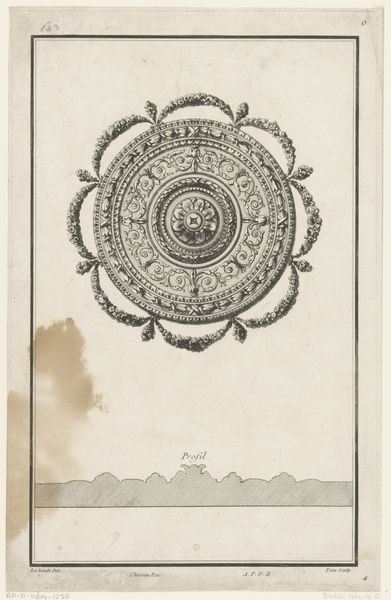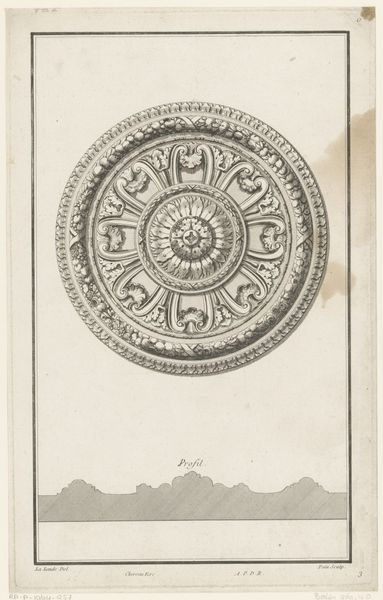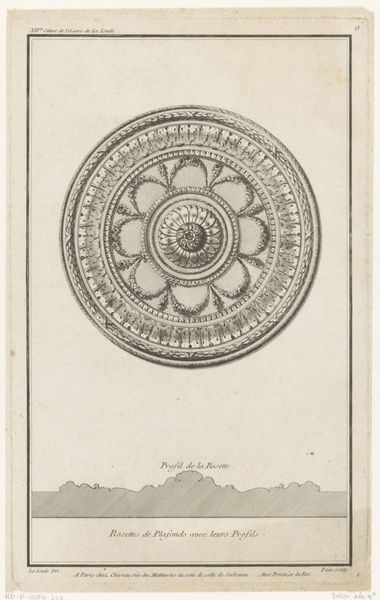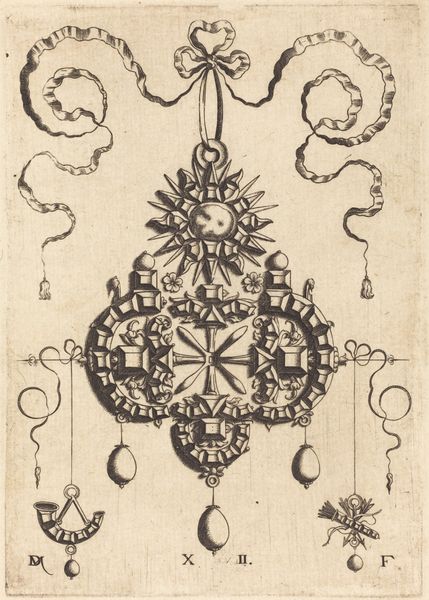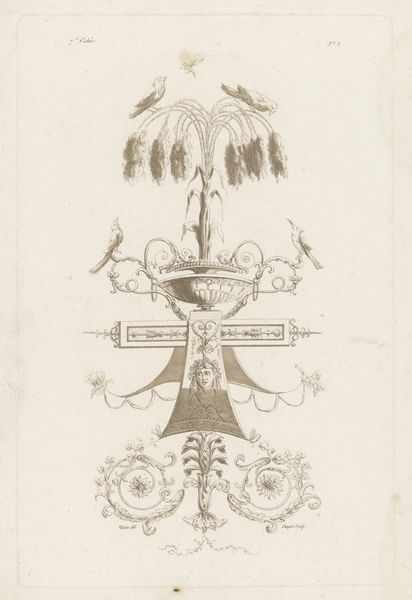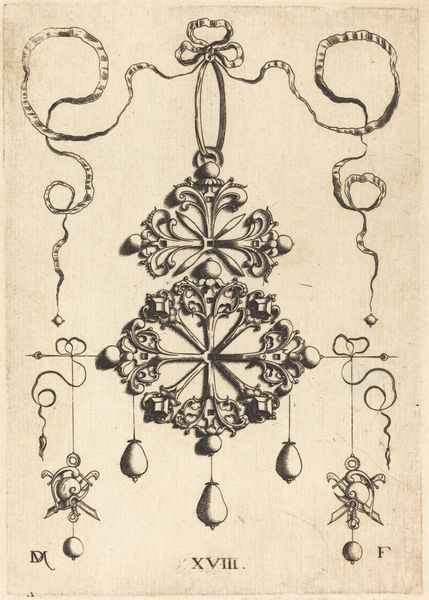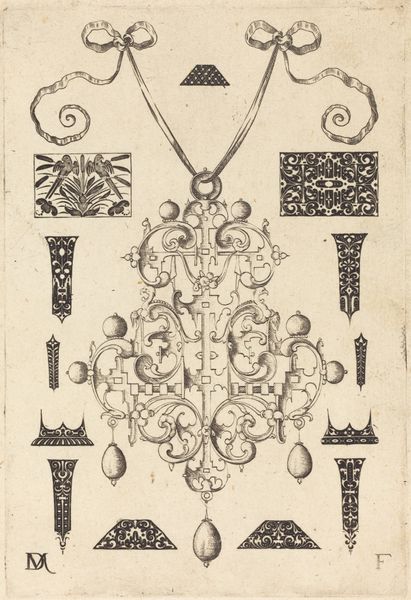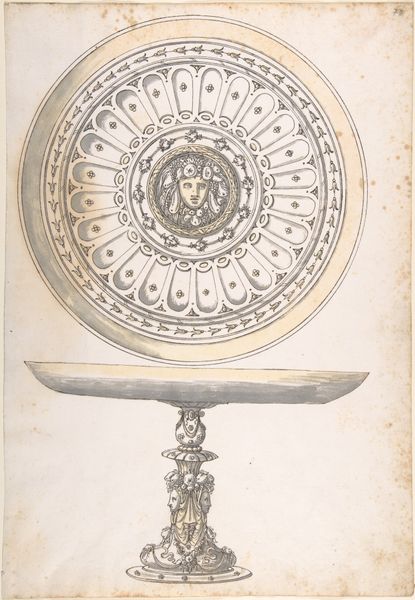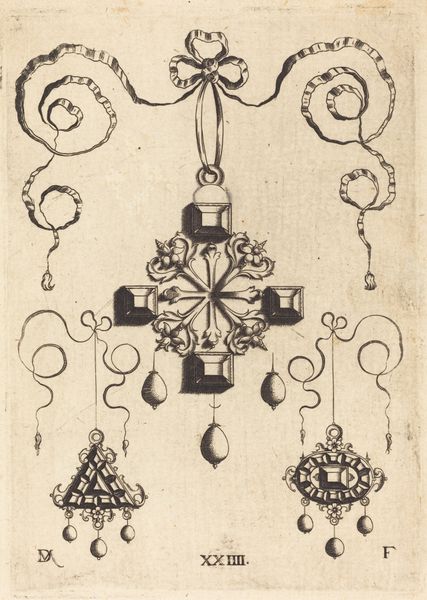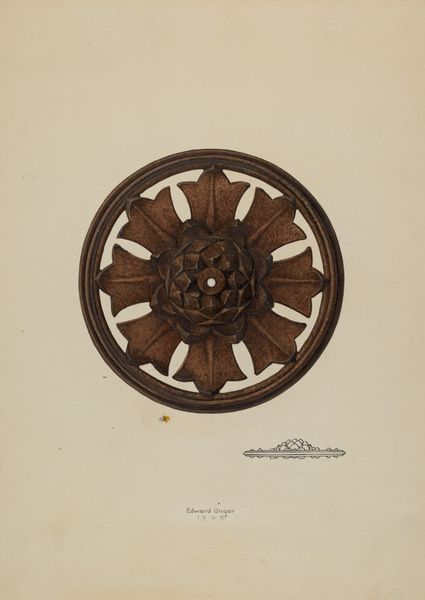
drawing, ink, engraving, architecture
#
drawing
#
neoclacissism
#
old engraving style
#
ink
#
geometric
#
decorative-art
#
engraving
#
architecture
Dimensions: height 344 mm, width 218 mm
Copyright: Rijks Museum: Open Domain
Curator: It has an immediate impact—like glimpsing a key to hidden meanings. Editor: Hidden indeed, at first glance. The “Rozet met fakkels en pijlenkokers”, a drawing from around 1784-1785 by Augustin Foin, feels very restrained in its ink and engraving. I find myself noticing the material support— the ageing of the paper is showing through a few stains at the bottom. Curator: Stains as memories, right? This rosette isn't just decoration; those torches and quivers aren’t casual ornamentation. They echo classical allegories of love, war, and virtue, all harmonized within this symmetrical design. We tend to see neoclassicism as cold, but those symbols once sparked very strong associations. Editor: But look how meticulously this drawing is rendered. This rosette becomes an element for something else: architectural ornamentation! I think the beauty in Neoclassicism truly rests in the level of labor involved. I can imagine someone repeating the same action for days or weeks. This object becomes something new to me – how did artisans consume ornament design? Was the idea for sale and the production localized? Curator: Absolutely, production and circulation is vital! These precise geometric shapes and idealized forms reference a visual language understood by a cultured elite across Europe. Think of architects adapting these designs for grand residences; symbols shaping the self-image of a rising class. Foin condenses complex ideas into a readily adaptable form. Editor: A product, but also an ideal. A blueprint infused with layers of symbolic intention ready for any patron of the time! Even now I want to trace it. It really invites haptic interaction through visual means. But let me ask you: does focusing so much on the encoded language isolate other people from finding meaning within this piece? Curator: Maybe at first. But the beautiful thing about symbols is their potential for reinvention. While the initial meaning might be historically contingent, the emotional and psychological power of an image, particularly archetypal ones, remains. Today, these symmetrical shapes could also simply provide a soothing effect with the right amount of contrast. Editor: You know, understanding it as part of a larger network of material processes makes it strangely, viscerally modern. Curator: I’ll take a mental note of that for the next deep dive into symbology!
Comments
No comments
Be the first to comment and join the conversation on the ultimate creative platform.

